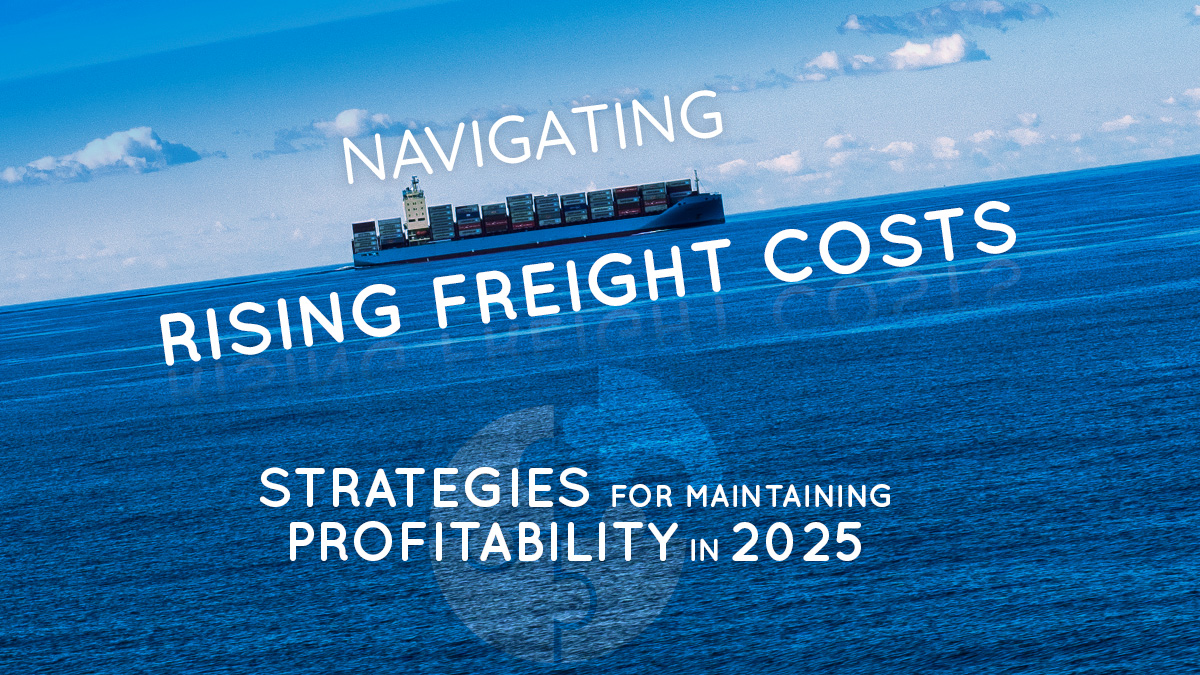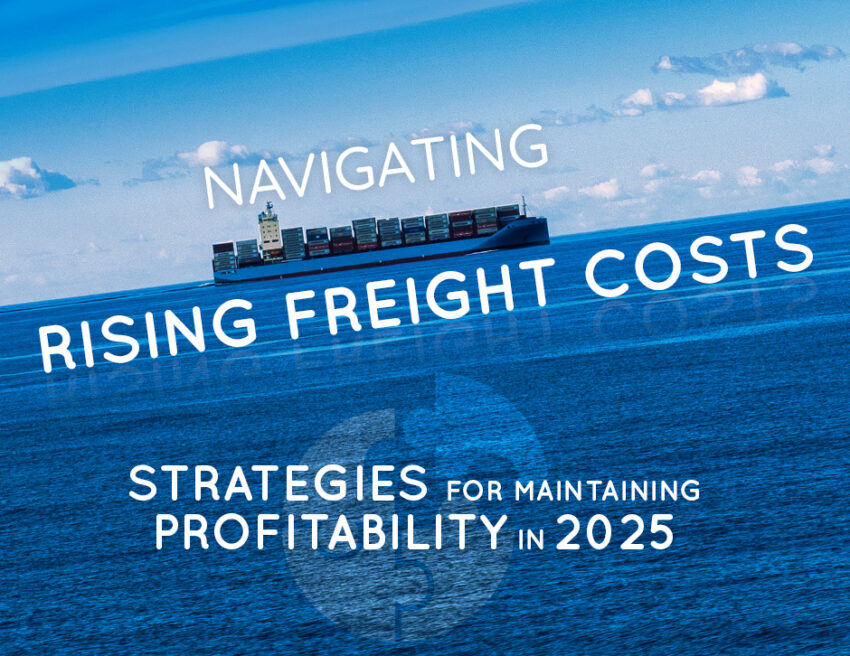In an era of economic volatility, geopolitical tensions, and increasing regulatory pressures, freight forwarders around the globe are grappling with rising operational costs. From fluctuating fuel prices and surging demand for capacity to heightened compliance expenses, 2025 is shaping up to be another challenging year for maintaining profitability in the logistics industry. However, with proactive strategies, technology adoption, and financial resilience, freight forwarders can effectively navigate these obstacles and ensure sustainable growth. In this blog, we’ll explore the key factors contributing to rising freight costs and provide actionable strategies to help forwarders maintain their profit margins in 2025.

Understanding the Key Drivers Behind Rising Freight Costs
Freight costs are shaped by a complex interplay of global and regional factors, each adding layers of complexity to pricing structures. Fuel price volatility remains one of the most unpredictable cost components, driven by geopolitical tensions, natural disasters, and supply chain disruptions. The logistics sector heavily depends on stable fuel prices, and fluctuations can significantly impact profit margins.
Additionally, container shortages and persistent port congestion are amplifying costs. With demand for shipping containers surpassing supply, forwarders are left grappling with longer wait times, increased storage fees, and higher transport rates. Labor shortages are further exacerbating cost pressures, as the demand for skilled logistics professionals outweighs availability, driving up wages.
Regulatory compliance, especially concerning environmental standards and customs documentation, also adds to the operational burden. Meeting these requirements demands both time and financial investment, placing additional strain on already tight budgets. Furthermore, the relentless growth of e-commerce has intensified the need for faster last-mile deliveries, adding complexity and cost to logistics operations.
Harnessing Technology for Enhanced Efficiency
Digital transformation is no longer optional for freight forwarders—it’s essential for survival. Technological advancements such as Artificial Intelligence (AI), blockchain, and Internet of Things (IoT) devices are revolutionizing logistics management. AI-powered route optimization tools minimize fuel consumption and delivery times, while IoT-enabled tracking devices provide real-time cargo visibility, reducing delays and improving transparency.
Automated documentation systems are also streamlining administrative workflows, reducing human errors, and ensuring compliance with global regulations. Predictive analytics tools offer valuable insights into cost-saving opportunities, enabling freight forwarders to make data-driven decisions. While initial investments in these technologies may seem steep, the long-term savings and operational benefits far outweigh the costs.
Fostering Strong Carrier Partnerships
Building strategic partnerships with airlines, shipping lines and trucking companies is essential for managing freight costs effectively. Long-term contracts can provide protection against sudden price surges, offering stability in an unpredictable market. Collaboration with carriers fosters trust and ensures priority access during peak seasons, preventing costly disruptions.
Freight consolidation is another cost-saving strategy, where multiple smaller shipments are combined to maximize cargo space and reduce per-unit shipping costs. Transparent communication and collaborative negotiation play a critical role in achieving favorable terms and building mutually beneficial relationships with carriers.
Diversifying Supply Chain Networks for Resilience
Overdependence on a single trade route, supplier, or region can leave freight forwarders vulnerable to disruptions and escalating costs. Diversification offers a safety net by spreading risks across multiple channels. Exploring alternative shipping routes and leveraging less congested transport hubs can alleviate some of the pressure caused by bottlenecks.
Regional warehousing is another effective strategy for reducing transportation costs and minimizing transit times. By strategically positioning warehouses closer to key markets, forwarders can reduce reliance on long-haul routes and streamline their supply chain operations.
Prioritizing Sustainability for Long-Term Savings
Sustainability in logistics is no longer a luxury—it’s a necessity. Environmental regulations are becoming more stringent, and freight forwarders must adapt to meet these standards. Investing in fuel-efficient fleets, including hybrid or electric vehicles, can significantly reduce long-term fuel costs.
Route optimization not only reduces delivery times but also minimizes carbon emissions by avoiding unnecessary mileage. Eco-friendly packaging materials contribute to weight reduction, lowering overall shipping costs. Sustainability initiatives not only align with regulatory requirements but also position freight forwarders as responsible industry players, enhancing their market reputation.
Strengthening Financial Planning and Forecasting
Sound financial management is crucial for navigating rising operational costs without compromising profitability. Implementing dynamic pricing models allows freight forwarders to adjust rates in response to real-time market changes, ensuring their pricing strategies remain competitive.
Cost-monitoring tools and advanced financial software provide better visibility into expenses, helping businesses identify inefficiencies and control unnecessary spending. Building financial reserves acts as a buffer against unexpected cost spikes, offering stability during volatile market conditions.
Investing in Talent Development and Retention
A skilled workforce remains one of the most valuable assets for any logistics company. Training programs aimed at upskilling employees ensure they are well-versed in the latest industry technologies and best practices. Skilled workers contribute to smoother operations, reducing costly errors and delays.
Employee retention strategies, including performance incentives, flexible work arrangements, and competitive compensation packages, play a key role in reducing turnover rates. Retaining experienced staff not only improves efficiency but also reduces the costs associated with recruitment and onboarding.
Delivering Exceptional Customer Service
Cost management alone isn’t enough—customer satisfaction remains a cornerstone of long-term success. Transparent pricing structures build trust and prevent misunderstandings, while value-added services, such as warehousing, customs brokerage, and cargo insurance, can create additional revenue streams.
Educating customers about market conditions, pricing fluctuations, and supply chain realities helps manage expectations and fosters stronger client relationships. Freight forwarders who prioritize exceptional customer service are better positioned to weather industry uncertainties.
Leveraging Logistics Networks for Global Support
Joining a reliable logistics network, such as The Cooperative Logistics Network, can provide freight forwarders with a competitive edge in managing rising costs. These networks offer global reach, trusted partnerships, and collaborative opportunities that individual companies might struggle to achieve on their own.
Membership in logistics networks allows forwarders to leverage collective buying power, secure better freight rates, and share resources such as warehouses and transport assets. Additionally, these networks provide risk mitigation solutions and contingency plans, ensuring seamless operations even during disruptions.
Looking Ahead: Adaptability is Key
Rising freight costs are an unavoidable reality, but they don’t have to dictate the success or failure of freight forwarders. By embracing technology, diversifying supply chain strategies, fostering strong partnerships, and prioritizing sustainability, freight forwarders can create a resilient foundation for long-term growth.
2025 will undoubtedly bring its share of challenges, but it also presents opportunities for innovation, collaboration, and strategic transformation. The freight forwarders who remain agile, forward-thinking, and customer-focused will not only survive but thrive in an evolving global logistics landscape.


